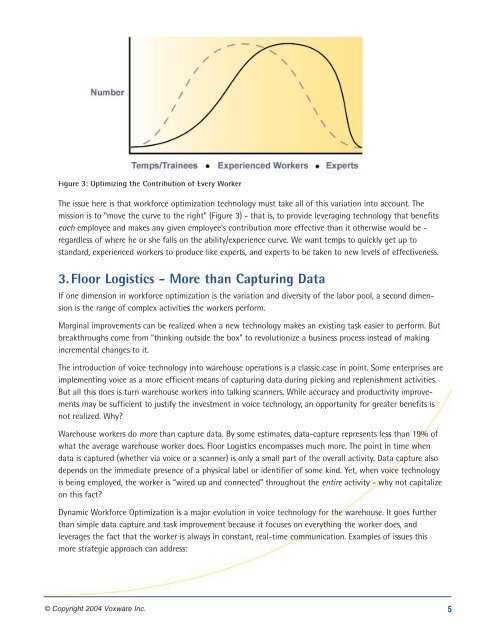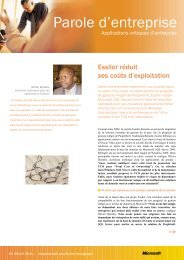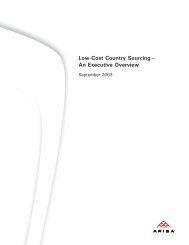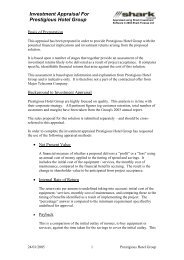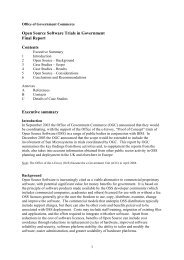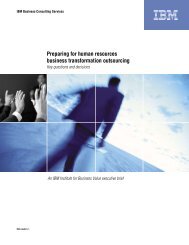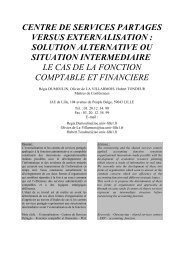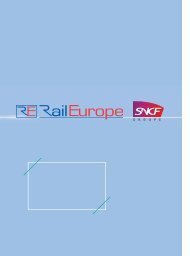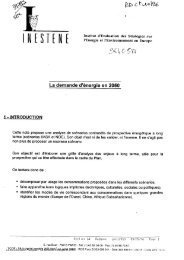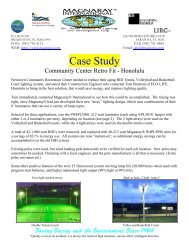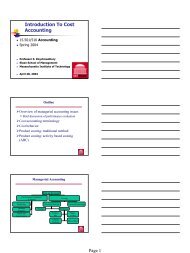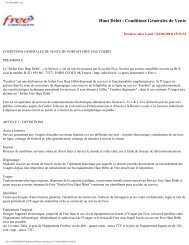Optimizing the Front Line - Costkiller
Optimizing the Front Line - Costkiller
Optimizing the Front Line - Costkiller
You also want an ePaper? Increase the reach of your titles
YUMPU automatically turns print PDFs into web optimized ePapers that Google loves.
Figure 3: <strong>Optimizing</strong> <strong>the</strong> Contribution of Every Worker<br />
The issue here is that workforce optimization technology must take all of this variation into account. The<br />
mission is to “move <strong>the</strong> curve to <strong>the</strong> right” (Figure 3) - that is, to provide leveraging technology that benefits<br />
each employee and makes any given employee's contribution more effective than it o<strong>the</strong>rwise would be -<br />
regardless of where he or she falls on <strong>the</strong> ability/experience curve. We want temps to quickly get up to<br />
standard, experienced workers to produce like experts, and experts to be taken to new levels of effectiveness.<br />
3. Floor Logistics - More than Capturing Data<br />
If one dimension in workforce optimization is <strong>the</strong> variation and diversity of <strong>the</strong> labor pool, a second dimension<br />
is <strong>the</strong> range of complex activities <strong>the</strong> workers perform.<br />
Marginal improvements can be realized when a new technology makes an existing task easier to perform. But<br />
breakthroughs come from “thinking outside <strong>the</strong> box” to revolutionize a business process instead of making<br />
incremental changes to it.<br />
The introduction of voice technology into warehouse operations is a classic case in point. Some enterprises are<br />
implementing voice as a more efficient means of capturing data during picking and replenishment activities.<br />
But all this does is turn warehouse workers into talking scanners. While accuracy and productivity improvements<br />
may be sufficient to justify <strong>the</strong> investment in voice technology, an opportunity for greater benefits is<br />
not realized. Why?<br />
Warehouse workers do more than capture data. By some estimates, data-capture represents less than 19% of<br />
what <strong>the</strong> average warehouse worker does. Floor Logistics encompasses much more. The point in time when<br />
data is captured (whe<strong>the</strong>r via voice or a scanner) is only a small part of <strong>the</strong> overall activity. Data capture also<br />
depends on <strong>the</strong> immediate presence of a physical label or identifier of some kind. Yet, when voice technology<br />
is being employed, <strong>the</strong> worker is “wired up and connected” throughout <strong>the</strong> entire activity - why not capitalize<br />
on this fact?<br />
Dynamic Workforce Optimization is a major evolution in voice technology for <strong>the</strong> warehouse. It goes fur<strong>the</strong>r<br />
than simple data capture and task improvement because it focuses on everything <strong>the</strong> worker does, and<br />
leverages <strong>the</strong> fact that <strong>the</strong> worker is always in constant, real-time communication. Examples of issues this<br />
more strategic approach can address:<br />
© Copyright 2004 Voxware Inc.<br />
5


